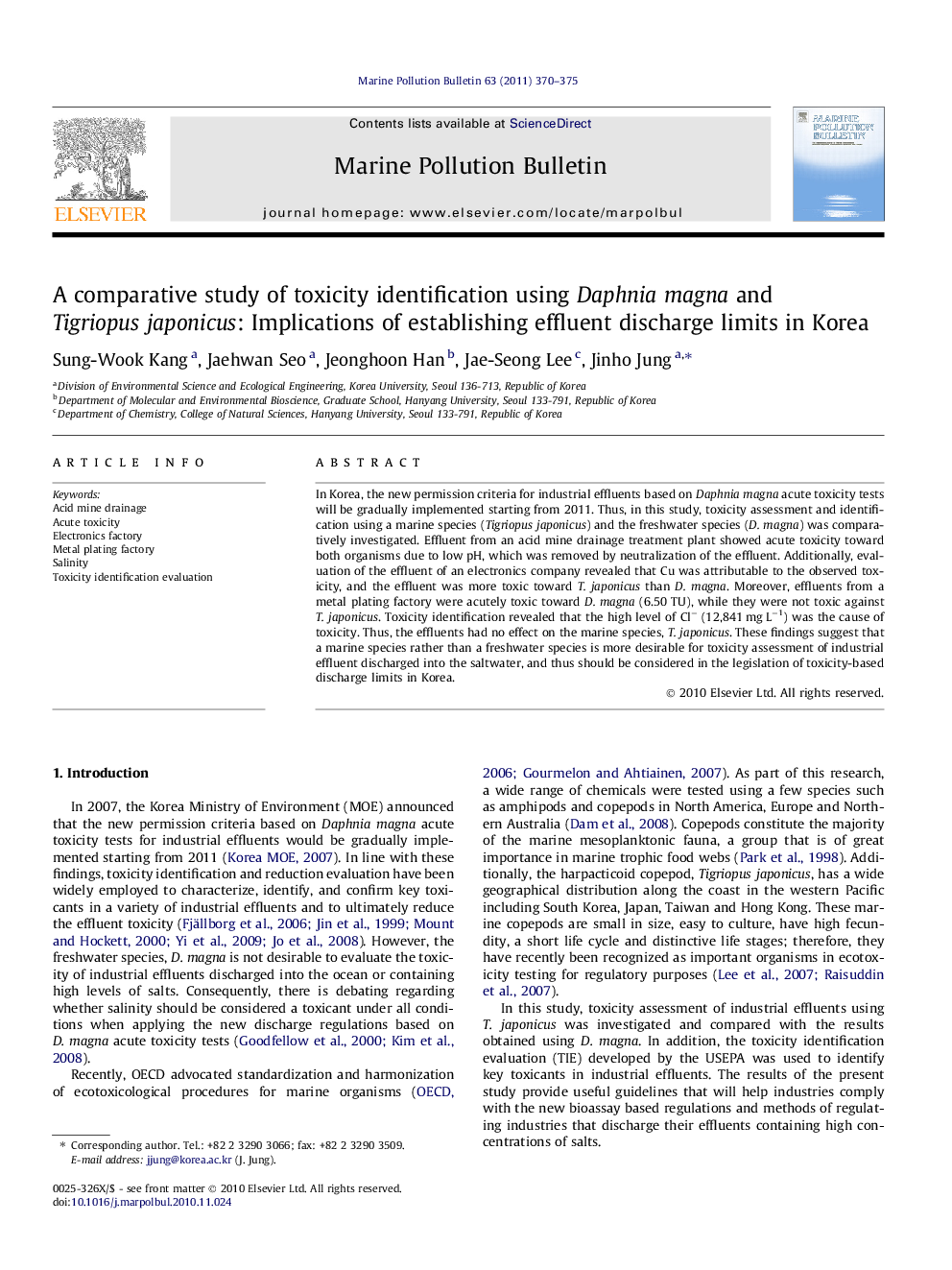| Article ID | Journal | Published Year | Pages | File Type |
|---|---|---|---|---|
| 6360719 | Marine Pollution Bulletin | 2011 | 6 Pages |
In Korea, the new permission criteria for industrial effluents based on Daphnia magna acute toxicity tests will be gradually implemented starting from 2011. Thus, in this study, toxicity assessment and identification using a marine species (Tigriopus japonicus) and the freshwater species (D. magna) was comparatively investigated. Effluent from an acid mine drainage treatment plant showed acute toxicity toward both organisms due to low pH, which was removed by neutralization of the effluent. Additionally, evaluation of the effluent of an electronics company revealed that Cu was attributable to the observed toxicity, and the effluent was more toxic toward T. japonicus than D. magna. Moreover, effluents from a metal plating factory were acutely toxic toward D. magna (6.50 TU), while they were not toxic against T. japonicus. Toxicity identification revealed that the high level of Clâ (12,841 mg Lâ1) was the cause of toxicity. Thus, the effluents had no effect on the marine species, T. japonicus. These findings suggest that a marine species rather than a freshwater species is more desirable for toxicity assessment of industrial effluent discharged into the saltwater, and thus should be considered in the legislation of toxicity-based discharge limits in Korea.
Research highlights⺠Various toxicity-causing chemicals in different types of industrial effluent. ⺠Different toxic response between a marine and freshwater species. ⺠Considerations in implementation of toxicity-based discharge limits in Korea.
